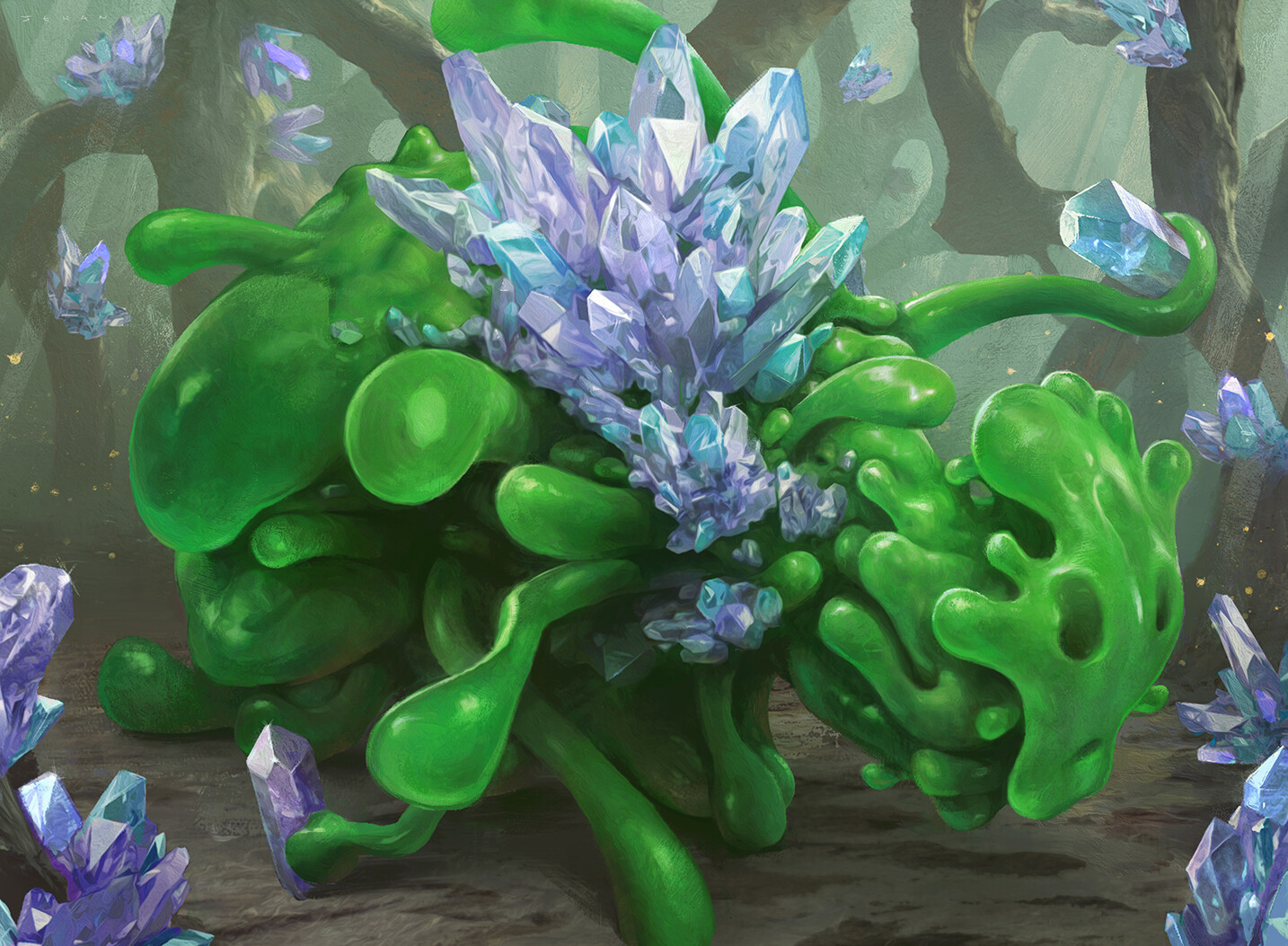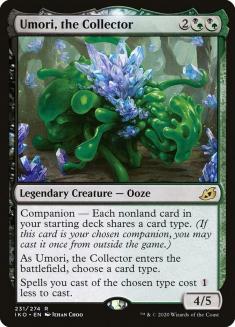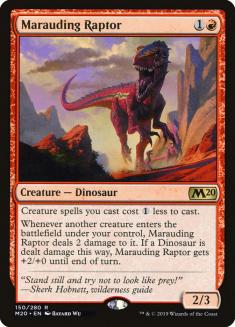Less than a week has passed since the digital release of Ikoria: Liar of Behemoths. Expecting new mechanics to find their footing in such a limited time period is simply unfair. Unpacking and fully leveraging the new companions is a process that will take time as well as a healthy dose of trial and error. In a month or so I fully expect…
What’s that? Companions took first and second place in the Vintage Challenge?
Well, obviously when you are combining cards with Black Lotus they get out of hand pretty quickly, and…
First through fourth place in the Legacy challenge? Okay, I guess Lurrus of the Dream-Den is pretty messed up with Delver of Secrets and Dreadhorde Arcanist but…
Yorion, Sky Nomad, you say? Okay, but in Modern…
The entire Top 8?!
The entire Top 4 of the Pioneer Challenge.
Six of eight slots in the Standard Challenge Top 8.
Companions have stepped up and changed the game of Magic overnight. That’s fine. It’s time to adapt. The first step is understanding what strategies, both macro and micro, have their values altered by the presence of companions.
Let’s be clear: the vast majority of finishes discussed above were claimed by Lurrus of the Dream-Den.
Like most of the companions, Lurrus represents an extra resource in and of itself, and immediate extra resources upon resolution. This means that trying to exchange resources with a companion deck is almost always going to be a losing proposition. Decks that aren’t doing companion things themselves should not bank on maintaining narrow resource edges unless they have a reliable plan for preventing companions from entering the battlefield. Simply put, fair decks should prefer countermagic over discard, and this is only amplified by the companion’s protection from discard.
If you’re not attempting to directly engage with a companion, then you must focus on a plan to outscale it. The current Standard format understands this principle well, and I expect decks like Temur Reclamation to continue to succeed. Pioneer will either see massive evolution or get completely overrun by companions, because the format previously revolved around some fairly traditional resource exchanges.
In Modern, Primeval Titan had a tough week, but Amulet Titan is known for adaptation, and I have a feeling it will figure out a way to go over top of companions once more. If you’re going to fight a resource war, you’d better be willing to commit to the idea and go all-in with things like Snapcaster Mage and Ice-Fang Coatl. In Legacy and Vintage, Lurrus (and to a lesser extent, Yorion, Sky Nomad and Zirda, the Dawnwaker) are simply too powerful at too low of an opportunity cost. Play them until they get taken away from you.
As far as individual cards that benefit from the rise of companion, it’s time for a lot more Essence Scatters and the occasional Essence Capture in Standard. Decks looking to leverage these cards will have to remain aware of Teferi, Time Raveler and not default to pure reactivity. The Mono-Blue Aggro list from this weekend’s Standard Challenge is one of the few non-companion decks I’m comfortable recommending right now.
Creatures (20)
Lands (22)
Spells (18)

In Modern, Meddling Mage gets a nice boost. It doesn’t hurt that some other Lurrus-hating Humans recently joined the fray as well. Despite Lurrus’s dominance in Week 1, please don’t go crazy on graveyard hate. If you focus on that mode of interaction, decks like Burn will just laugh and kill you. Something smaller like the one-of Cling to Dust in the Modern Challenge-winning list is way more appealing. Focus on beating opposing companions with your macro strategy, not silver bullets.
Creatures (7)
Planeswalkers (2)
Lands (22)
Spells (29)

Adapting to the presently played companions is a fine first step, but this first week has also made it clear that the mechanic carries a ton of inherent power. Lurrus may have the most abusable ability, but any companion that we work to maximize has the potential for massive returns. Yes, even Umori, the Collector.
Umori has felt left behind in all the hype and I mostly get why. The restriction is more severe than most, and there’s no immediate value generated by putting Umori onto the battlefield. However, Umori makes up for this with a solid power/toughness to mana ratio, and the ability to go off if it spends any amount of time on the battlefield. I’ve got a whole host of Umori decks up my sleeve for Standard.
While I’ll be the first to admit these decks feel a step behind the incredible consistency of Lurrus, you never know when the metagame will shift. It’s even possible that our favorite kitty’s reign in Standard meets an untimely end if things spiral out of control. Always be prepared! So, that being said, let’s start with an abstractly powerful deck that loses to virtually everything that’s going on in Standard right now.
Creatures (35)
- 4 Paradise Druid
- 2 Gilded Goose
- 2 Insatiable Hemophage
- 4 Migratory Greathorn
- 1 Auspicious Starrix
- 4 Zagoth Mamba
- 4 Pollywog Symbiote
- 2 Brokkos, Apex of Forever
- 4 Dirge Bat
- 4 Gemrazer
- 4 Sea-Dasher Octopus
Lands (25)

The idea of making a single big creature in a world defined by Priest of Forgotten Gods and Teferi, Time Raveler does not fill me with excitement. However, this deck does produce a scary combination of aggression, staying power, and raw card advantage that you probably wouldn’t expect out of a pile of creatures. Zagoth Mamba can potentially pick off opposing Priests, and you don’t have to pile all of your threats on one mutated body. The problem is that all your cards only really justify their cost when you’re making some unholy amalgamation. In matchups where you can do so safely, this deck shines.
Combining the cost reduction of Umori with that of Pollywog Symbiote leads to some absurd turns, but Umori’s biggest selling point here is that it represents aggression all on its own. If your plan hasn’t come together, maybe a 4/5 on Turn 3 is just enough to get the job done?
Probably not, and that’s why I came up with this build designed to push Umori more towards the broken side of spectrum.
Creatures (33)
- 4 Paradise Druid
- 2 Fblthp, the Lost
- 4 Spark Double
- 3 Arboreal Grazer
- 4 Risen Reef
- 4 Yarok, the Desecrated
- 4 Thassa, Deep-Dwelling
- 2 Uro, Titan of Nature's Wrath
- 1 Thassa's Oracle
- 4 Gyruda, Doom of Depths
- 1 Yorion, Sky Nomad
Lands (27)

One of the clearest benefits of the Gyruda, Doom of Depths combo decks that were rapidly infiltrating every format prior to a Magic Online (MTGO) ban is that they begin the game with unconditional access to their main win condition by playing Gyruda in the companion slot. This is unquestionably the correct way to build these decks in a vacuum. When people account for your combo, things get a little bit stickier. By playing Umori in the companion slot instead, we get access to powerful cards like Arboreal Grazer and Uro, and have a B-plan that demands an answer in Yarok, the Desecrated. Plus, you can never have too many mana engines when you’re loading your deck with four-, five-, and six-mana creatures.
Once you’re in this configuration, its easy to laugh off a sideboarded Grafdigger’s Cage, and I promise you’ll still mill people out in Game 1. I wish we had a Ravenous Chupacabra available, but Kogla, the Titan Ape does a decent impression, even if we’ve got to pay a bit more for it. It does help get rid of opposing Grafdigger’s Cages too.
Umori is a good push for existing decks that were flirting with being mono-creatures to begin with to finally take the plunge. Take Mono-Black Devotion for example.
Creatures (35)
- 4 Gray Merchant of Asphodel
- 4 Gutterbones
- 1 Dread Presence
- 1 Yarok's Fenlurker
- 4 Knight of the Ebon Legion
- 4 Murderous Rider
- 2 Ayara, First of Locthwain
- 4 Woe Strider
- 1 Tymaret, Chosen from Death
- 2 Nightmare Shepherd
- 1 Gyruda, Doom of Depths
- 1 Dirge Bat
- 4 Fiend Artisan
- 2 Lurrus of the Dream-Den
Lands (25)

There’s real tension between maximizing pips for Gray Merchant of Asphodel and making sure you actually benefit from Umori’s cost reduction but I think I’ve settled in a sweet spot. I simply could not find a mono-creature plan that would be acceptable against Fires of Invention, so you’ll have to give up Umori to get access to Duress and Agonizing Remorse. This is likely the plan against control variants as well.
Enough thinking. Time for Umori to smash.
Creatures (35)
- 4 Gruul Spellbreaker
- 4 Arboreal Grazer
- 4 Marauding Raptor
- 3 Voracious Hydra
- 4 Bonecrusher Giant
- 4 Everquill Phoenix
- 3 Gemrazer
- 1 Proud Wildbonder
- 4 Quartzwood Crasher
- 4 Humble Naturalist
Lands (25)

Once you begin looking for ways to maximize the benefit from Umori’s cost reduction, you’re incentivized to double up on the effect, and that’s why I’ve brought Marauding Raptor out of retirement. Turn 2 Raptor into Turn 3 Umori is setting your opponent up for a very unpleasant Turn 4. Obviously, Marauding Raptor forces other concessions and our accelerants of Humble Naturalist and Arboreal Grazer are chosen specifically for their ability to live through a Raptor ping.
There’s some other cool stuff going on here with Raptor and mutate. When it comes to mutate I say everything with hesitance, but I believe that cost reduction will still apply for mutate costs and you will not incur Raptor damage. This makes it possible to potentially benefit from having two Raptors on the battlefield, since your larger creatures have toughness greater than four and several of your middle of the road creatures can mutate. I love the combination of Grazer and mutate and you haven’t lived until you’ve spent your Turn 2 destroying your opponent’s Witch’s Oven and attacking with a 4/4 trampler.
Quartzwood Crasher is a bit of a lark, but after playing it a fair amount in Limited, I think I’m a believer. If you ever make an additional body, the game spirals out of control immediately, and trample is exactly the ability I want on my large creature in a world focused on permanents with converted mana cost two or less. Also, bonus Dinosaur for Marauding Raptor!
As with most Gruul decks, the glaring weakness here is the manabase. If you’re willing to roll the dice, you’re rewarded with a nice aggressive option in a metagame that is desperate for one.
Obviously it’s easiest to meet Umori’s companion requirement by loading your deck with creatures, but it’s not the only option. My friend Gerry Thompson cooked up a nice one by focusing on artifacts.
Creatures (20)
Lands (24)
Spells (16)
Sideboard

Umori reaches its full potential when it allows you to cast spells for free, and while one-drops like Gingerbrute and Shadowspear aren’t blowing anyone away, when they combine with Umori and The Great Henge and Mystic Forge, you can start to see the appeal. This deck can go off in special ways, but it has a problem where it’s not quite fast enough in the early-game and doesn’t interact enough to deal with the late-game of something like Temur Reclamation or Jeskai Control. Still, you can see the potential here, and every artifact that gets printed in the next couple of years will have me reevaluating Umori in this context.
Creatures (16)
- 3 Daxos, Blessed by the Sun
- 3 Heliod, Sun-Crowned
- 2 Aphemia, the Cacophony
- 4 Alseid of Life's Bounty
- 4 Hateful Eidolon
Lands (24)
Spells (20)

This final deck is more of an example of what you could do, rather than what you should do, but it illustrates a valuable point. Magic cards are changing dramatically in the current era. The line between card types has less meaning now than it ever has before. Enchantments are creatures. Every creature has a spell stapled on. Your best card now sits in your sideboard, ready to be cast at any time. These ideas would have seemed unthinkable a decade ago. Things change, though, and we must adapt or be left behind.
If you’re worried that Umori is limited in the types of decks it can slot into, trust me — it is capable of far more than is apparent at first glance.





